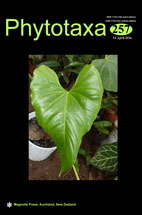Abstract
The sexual morph of Seimatosporium cornii, collected from dead stems of Cornus sanguinea in Arezzo, Italy, is reported in this paper. It was linked to S. cornii based on analysis of combined LSU and ITS sequence data. The sexual morph is characterized by minutely stromatic ascomata, cylindrical to clavate asci, with a J+, apical apparatus and 1–3-septate, fusiform ascospores. Seimatosporium cornii can be distinguished from the closely related species, Discostroma fuscellum, by the structure of the peridium, shape and septation of the ascospores and also its asexual morph. The sexual morph of S. cornii is reported from the same host and location as its asexual morph. We also provide data of SSU, TEF1-α and β-TUB genes of our strain, deposited in GenBank.

